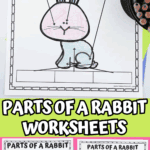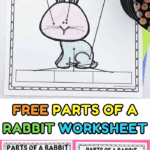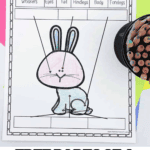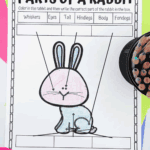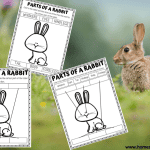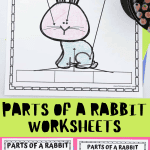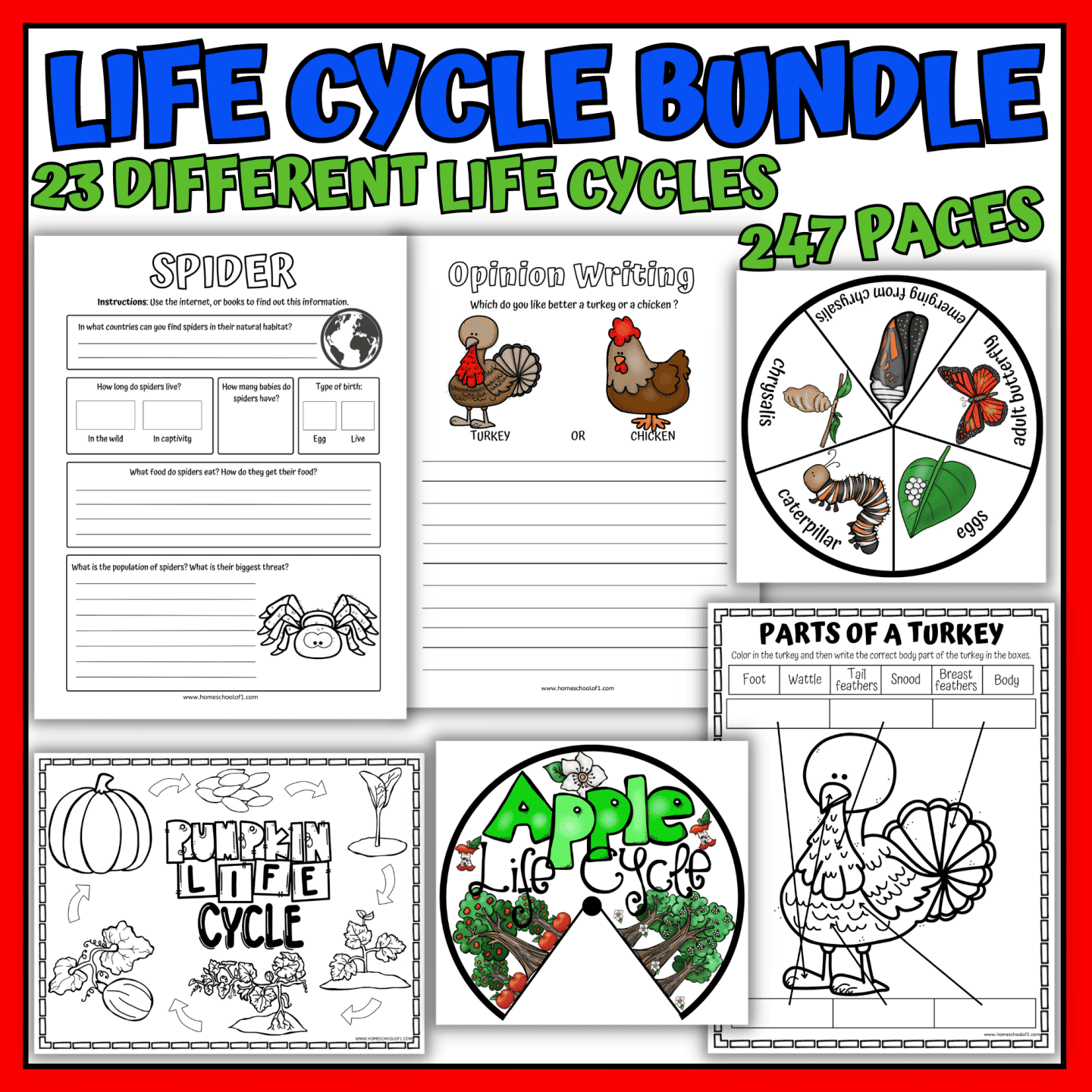Free Parts of a Rabbit Worksheet
This parts of a rabbit worksheet was a fun way for us to introduce basic animal anatomy without making it feel like a science lesson.
My son always remembers more when he’s coloring and labeling, and this simple activity helped him connect each part, like whiskers, hindlegs, and tail, to what he already knew about rabbits.
It’s great for early learners who need a hands-on visual to make sense of how animals are built.
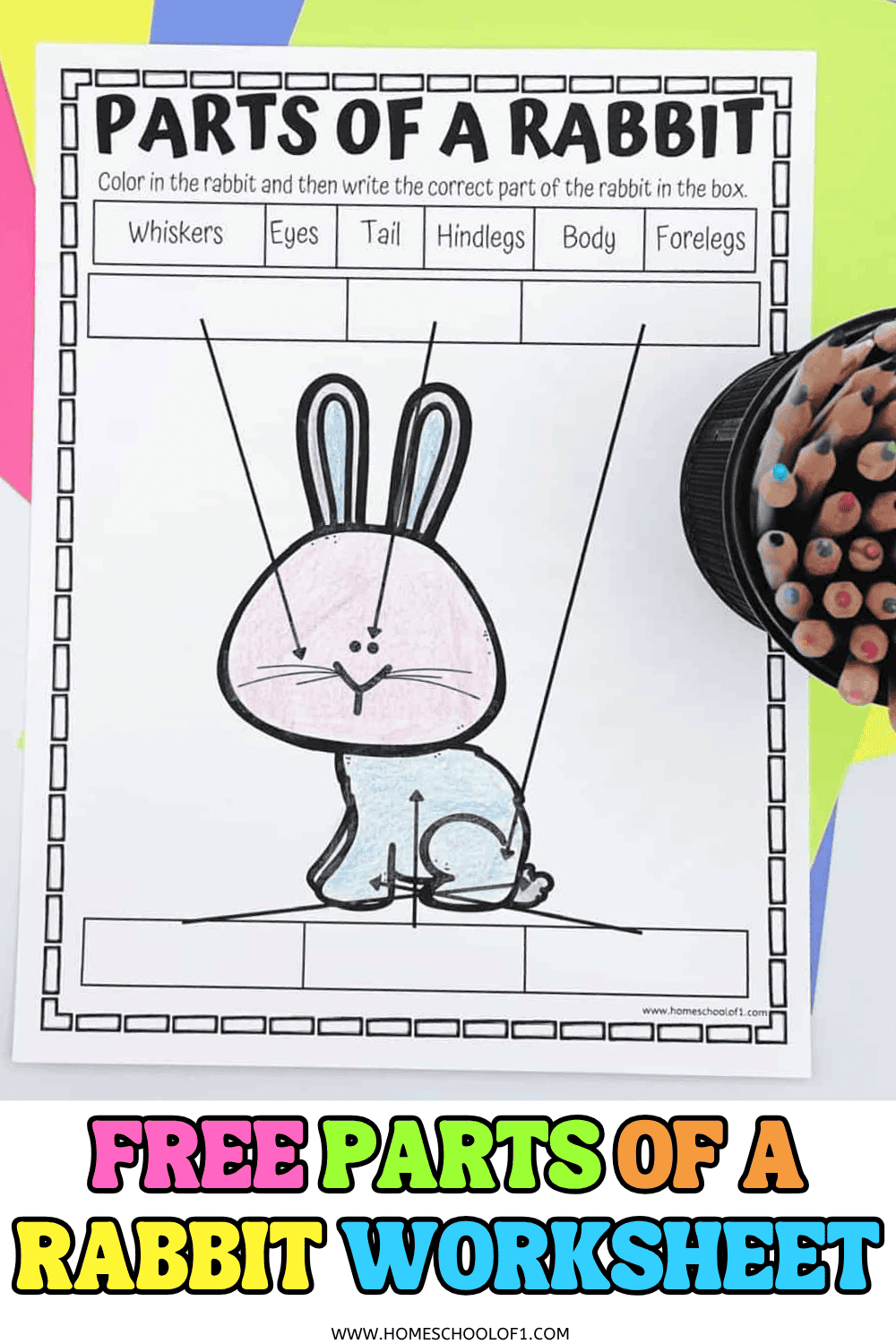
**This post may contain affiliate links. As an Amazon Associate and a participant in other affiliate programs, I earn a commission on qualifying purchases.**
What’s Included in This Parts of a Rabbit Worksheet
This science printable includes four engaging pages designed to help kids identify and label basic rabbit anatomy.
It’s low prep, easy to adapt for different ages, and a great way to bring science into your day without a full lesson plan.
Here’s what’s inside:
- Page 1: Labeling with arrows already placed, perfect for younger kids to match each word to the correct part.
- Page 2: Blank boxes around the rabbit for kids to write in the part names, great for recall and handwriting practice.
- Page 3: Same as page 2 but includes a word bank, ideal for kids who need a little extra support.
- Page 4: Answer sheet that doubles as a coloring page, handy for early finishers or for students to check their own work.
The six labeled parts are: forelegs, body, tail, eyes, hindlegs, and whiskers.
What Is the Anatomy of a Rabbit?
The parts of a rabbit worksheet focuses on six simple body parts that kids can easily spot and label, but there’s more to each one than meets the eye.
As we worked through the activity, my son asked great questions about what each part does, so we took a few minutes to explore each one together.
Here’s a quick overview of the body parts included in the worksheet:
Legs
Rabbits use their front legs (forelegs) for digging, grooming, and balancing. Their powerful back legs (hindlegs) are built for speed and those playful “binkies” they’re known for.
This worksheet makes it easy to talk about the difference between the two.
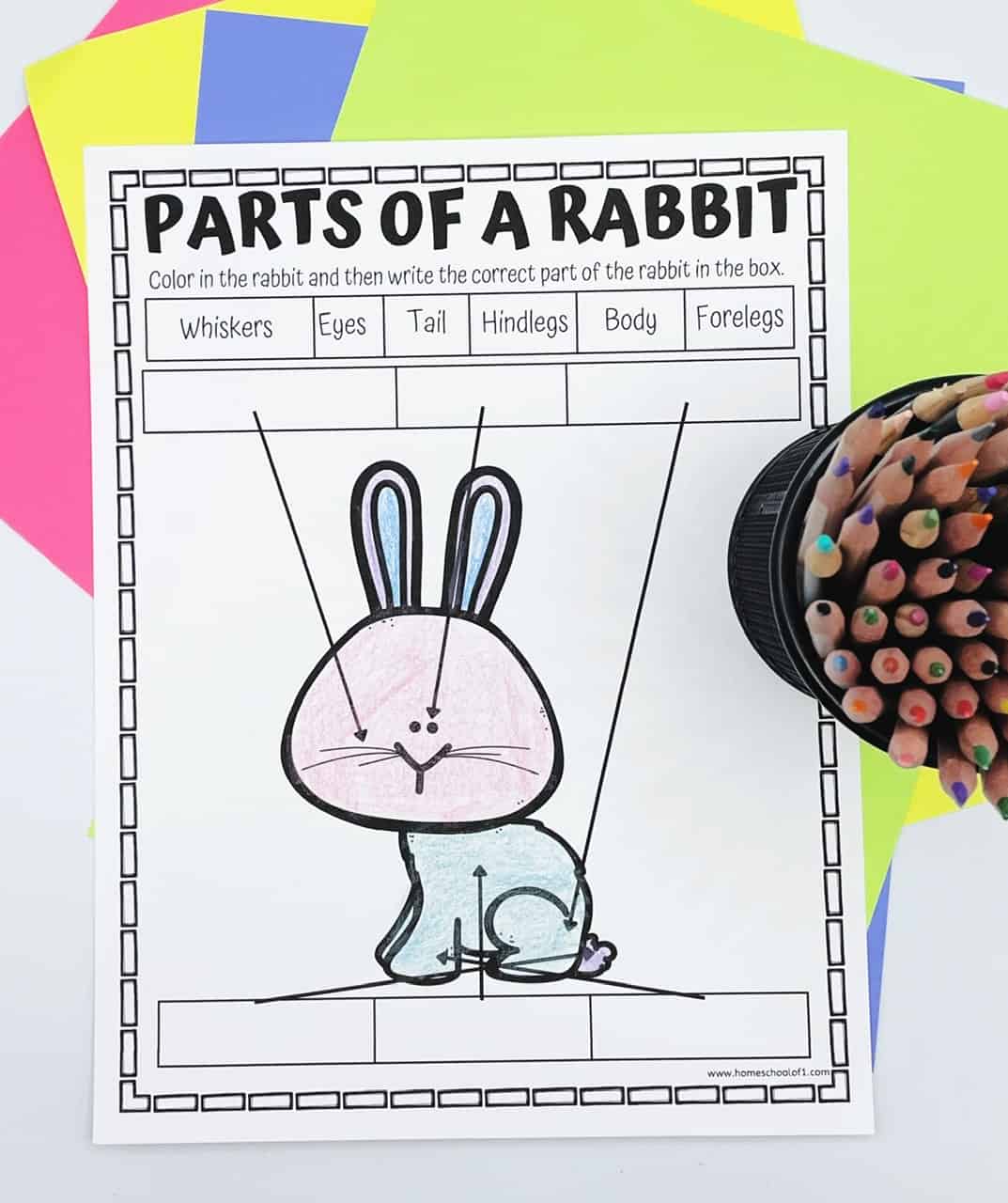
Body
The main part of a rabbit’s body protects vital organs and helps regulate temperature. We used this section to talk about how soft fur isn’t just cute, it’s functional.
Tail
That fluffy little tail helps with balance while jumping and acts like a flag when warning other rabbits of danger. It’s small, but important.
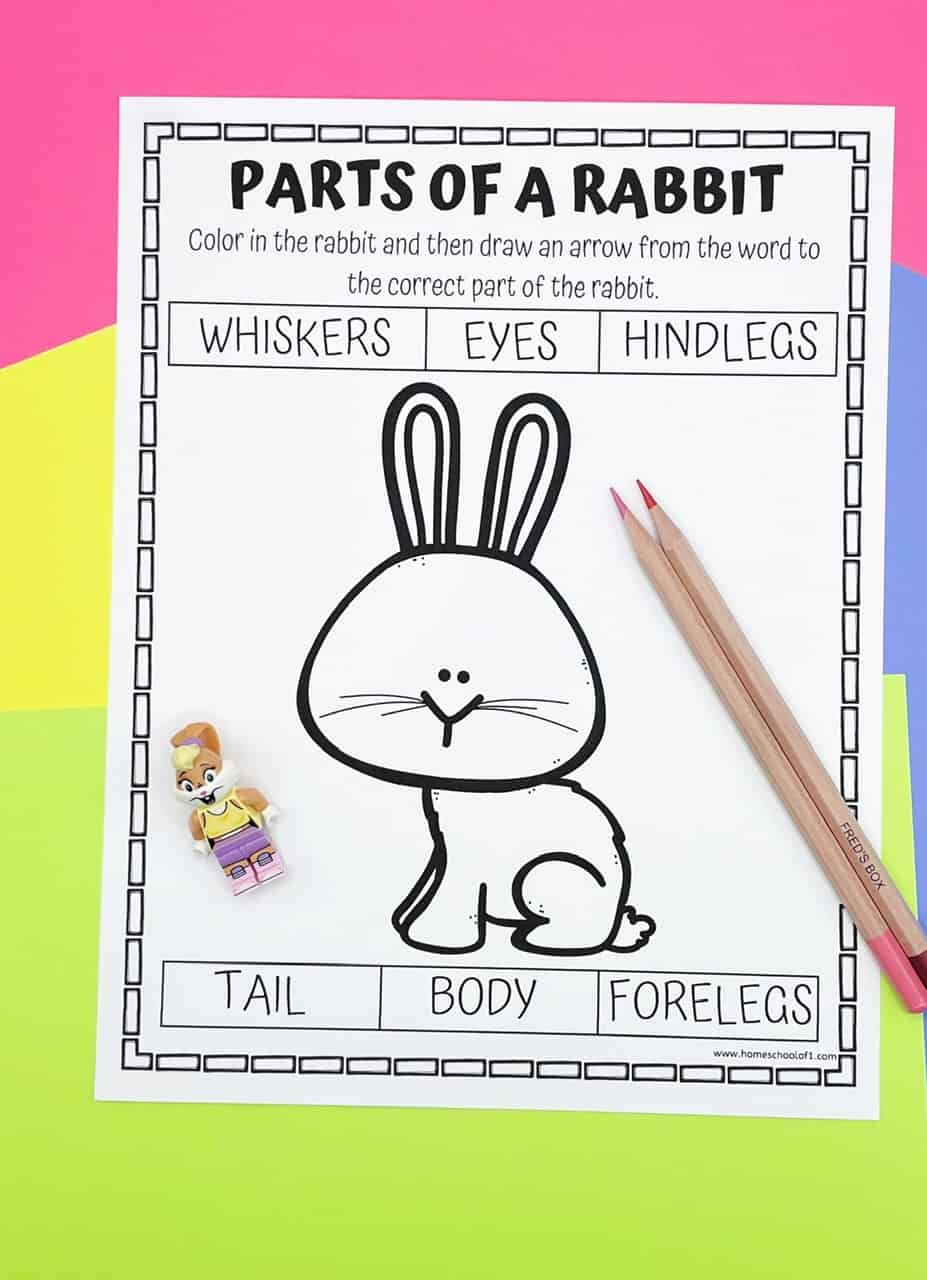
Eyes
Positioned on the sides of their head, a rabbit’s eyes give them nearly 360° vision. It’s a great chance to discuss how different animals see the world.
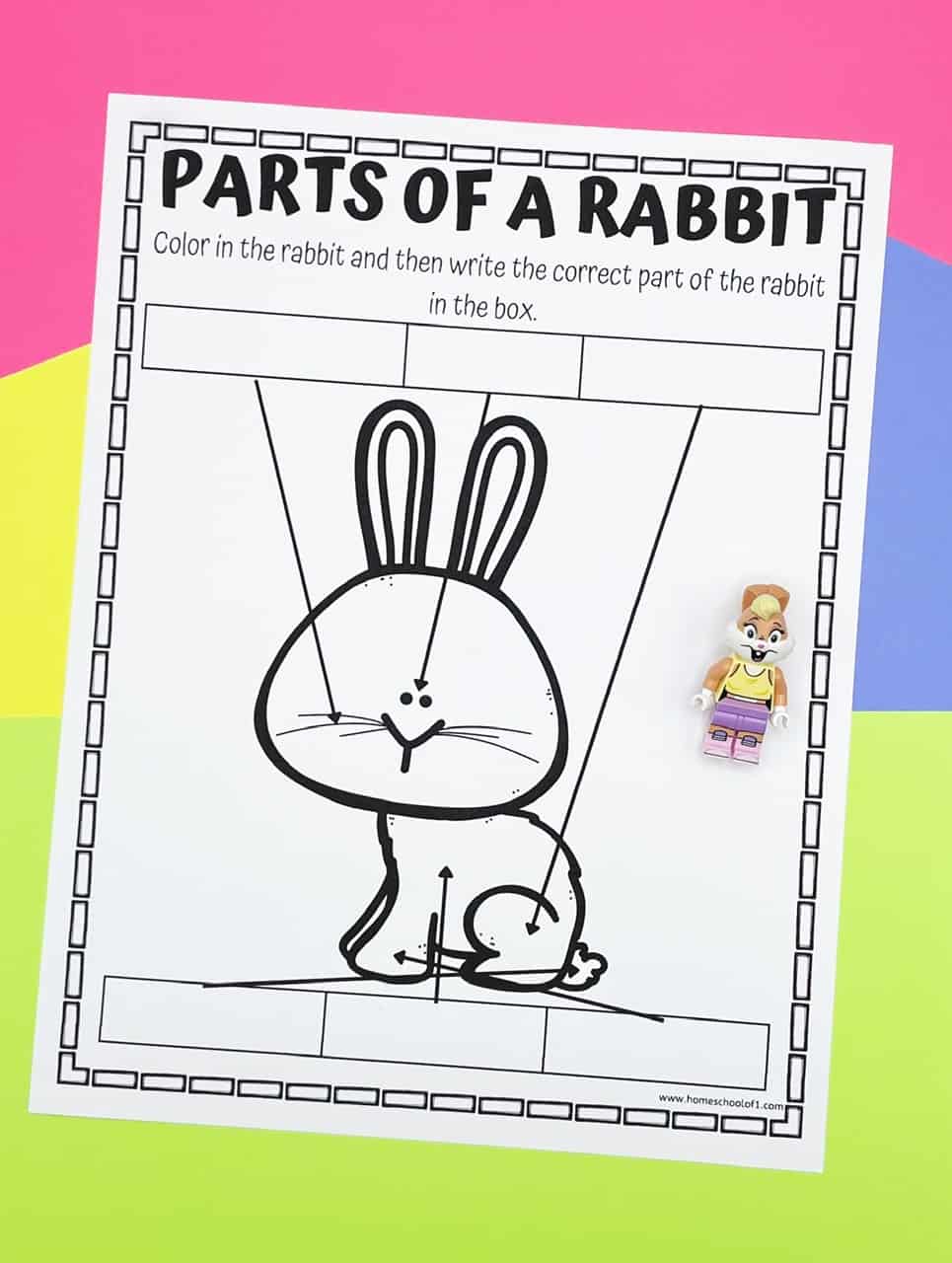
Whiskers
These aren’t just for show, whiskers help rabbits feel their way around, especially in tight or dark spaces. Kids love this fact!
Each of these body parts appears on the worksheet, making it easy to introduce new vocabulary and connect it to how real animals function in the wild.
Looking for more rabbit-themed science? Our rabbit life cycle worksheets are a great way to build on this activity with fun, age-appropriate printables that explore how rabbits grow and change.
Rabbit Books We’ve Loved
After finishing the label a rabbit worksheet, my son was still full of questions, so we grabbed a few favorite rabbit books to keep the learning going (without him even noticing it was still “school”).
Hop, Bunny! is a sweet and simple story perfect for younger kids. The playful rhymes and soft illustrations pulled us right in, and it’s one of those books that’s fun to read aloud more than once.
Rascally Rabbits! is more of a laugh-out-loud pick. It’s filled with silly bunny antics, and we had fun pointing out the rabbit behaviors that matched what we learned on the worksheet, especially all the hopping and mischief.
The Rabbit Listened isn’t about anatomy, but it’s one we’ve returned to again and again. It’s a gentle, emotional story about feeling heard and supported, one of those books that sticks with kids in the best way.
Get Your Free Rabbit Anatomy Activity Sheet Here!
Pressed for time? Access our comprehensive collection of life cycle worksheets, covering 23 different cycles with over 247 pages.
Ready to grab your free printable? Just pop your name and email into the form below, and it’s all yours!
If you don’t see the form below, click here to get the free anatomy of a rabbit worksheet.
Last Updated on 9 July 2025 by Clare Brown


